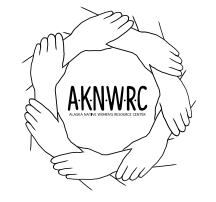Celebrating FVPSA’s 35th Anniversary
By Tami Truett Jerue
This year marks the 35th anniversary of the signing into law of the Family Violence Prevention and Services Act (FVPSA) administered by the U.S. Department of Health and Human Services, Administration for Children & Families, Family and Youth Services Bureau (FYSB). Just over a quarter of the 229 Tribes in Alaska receive FVPSA funds, and only since 1998. The tribes receive funding amounts annually from $14,000 to $23,000. Although these are small amounts, the help this has meant for Alaska Native victims of domestic violence has been lifesaving. In 2017 and 2018, Congress recognized the disparities facing tribal victims and added $5 million in appropriations to the FVPSA tribal allocation. These funds are the only dedicated funds for shelter and supportive services that many Tribes have access to. Alaska Native villages have used these funds to help keep women and children safe.
Often there may not be safety available in our villages and people have to go to relatives or shelters in other communities in order to escape violence. Sometimes the cost of travel out of a community is so expensive that a large family could easily expend the whole grant just to relocate to an emergency shelter. However, without these funds that relocation and safety would not at all be possible. So, when we say these funds can be life-saving we mean the availability of these funds often is the only hope for safety in an emergency or crisis response particularly in lieu of the crisis of the absence of law enforcement and other emergency responses in our villages.
We have many stories of how these funds have impacted people trying to get to safety or trying to pick up the pieces of their lives. Women and children getting on airplanes in small rural communities to shelter with relatives in other communities or going to shelter in domestic violence shelters in “hub” or “urban” communities of the State. Transportation such as boats and snow machines to other communities so that a family escaping violence can stay with a relative and feel safe. How many stories of women fleeing their homes with their children in the winter months with no place to go and no law enforcement or other services to call for help and sheltering in smokehouses, or the bushes until they could go home. These funds make a difference.


